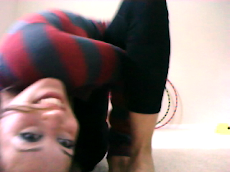The alarm wakes me up at 5.30am. I ignore it.
My sister pokes me at 5.40. I ignore her too.
At 5.50 I roll sideways and launch myself with minimal effort into the shower, which, for the first time in months, is hot. By 6.00 I am steamed, dressed, armed like a turtle with my rucksack on my back, shepherding my family into a taxi to carry us swiftly to the bus terminal.
It is dark but we are full of purpose.
We arrive to a crowd. Unusual, I think, but then again perhaps not so much; the bus journey from David to Panama City is a minimum eight hours of dry, dull savannah; any seasoned traveller will happily trade a few hours in the morning for a head start on the day. I stroll to the ticket office and state boldly our desire to leave on the 6.30 departure. The attendant looks at me with the blankness of repetition and informs me that tickets will not be on sale until the road reopens.
My flow, interrupted. My smile falters.
What road?
But there is no need to ask this question. The answer is simply; The Road. The only road to cross Panama and indeed the only artery maintaining the flow through Central America, linking the Panama Canal with every other trade centre in the North American continent. At almost 50,000km long, the Panamericana is the world's longest 'motorable road', running from Alaska down to its abrupt end in Ushuaia, Argentina. It breaks just once, 700 km east of here, where the spinal curve of Central America trickles into a dirt track, bowing out graciously to the impenetrable Darien Gap that famously divides Panama and Colombia.
I've followed this epic path through the deserts of Mexico, the mountains of Guatemala, the cliffs of El Salvador and the rolling hills of Honduras, through volcano-strewn Nicaragua and the cloud forests of Costa Rica. I've seen it turn from painted tarmac to crumbling dirt; parallel lanes of strictly-ordered traffic to single, winding mountain loops. I've watched its shimmering growth in the sun and I've seen dramatic collapse in the storms.
Now in Panama I seem doomed to rebound up and down its length, pulled by the forces of friends and family and ill-formed plans. For in Panama this really is the only road, and anyone who spends any decent time here will begin to know it well.
So when they tell me that it is closed until further notice, I listen well. It is hard not to respect this move when I have experienced the route in this way. Whoever is responsible for this act of rebellion has some serious power in their hands.
The blockade is in the Ngobe Bugle Comarca, near San Felix, a couple hours east of David City. The Ngobe are one of a handful of indigenous groups within Panama, who have each retained enough autonomy to mark themselves on maps. These groups rule four Comarcas as semi-independent states under the Central Panamanian government. The Ngobe, like the Kuna and the Embera tribes, are mostly left to themselves, preferring to live the way they have lived for centuries and staying away from the action; staying away, that is, until the government decides to pass a law that threatens their land.
Which is exactly what has caused this uproar.
Today, our stagnancy has been inspired by official plans to re-open several mines within the Comarca, dredging the last of the land's wealth, as well as dam one of the last remaining un-plugged rivers in the area. The plans threaten not only the immediate environment, which will of course be literally torn apart, but also the self-sufficiency of the Ngobe people and their way of life.
While I sympathise with my father and his partner and the thousands of other tourists whose holidays are compromised, I cannot find it within me to wish this disturbance away. I pause in the middle of the action, surrounded by stories of missed flights and night-long waits, imagining that clot in the centre of the country, trails of compacting traffic growing even as I stand.
I think of that tiny blob on the map, the delineation of the land protected fiercely against centuries of conquest, and I marvel, as I have so often before, at the power of big business to take an eraser to those lines at the drop of a law.
I speak with my father. His blue eyes reflect that same scene. We could wait it out, wishing for the uprising to disperse, perhaps choosing a different destination. Or we could take ourselves and our intention out of the equation.
At 1pm we board a flight from David to Panama City.
As we trace the graceful arch of the country I squint through the pod-like window, trying to get a glimpse of the battle scene. The blockade itself and the people around it are too small to see…as invisible as they must be from the map, scribbled over in some office far away. But the lines of traffic around it would be unmistakable, a pregnant build-up of energy. I wonder how deeply these fingers will penetrate; how far away the impact will be felt.
Tuesday, January 31, 2012
Subscribe to:
Post Comments (Atom)

Just stumbled upon your blog after searching for "in the drowsy fantasy moment..." and, well, wow. Great writing. Especially that entry. Please, continue (?).
ReplyDelete